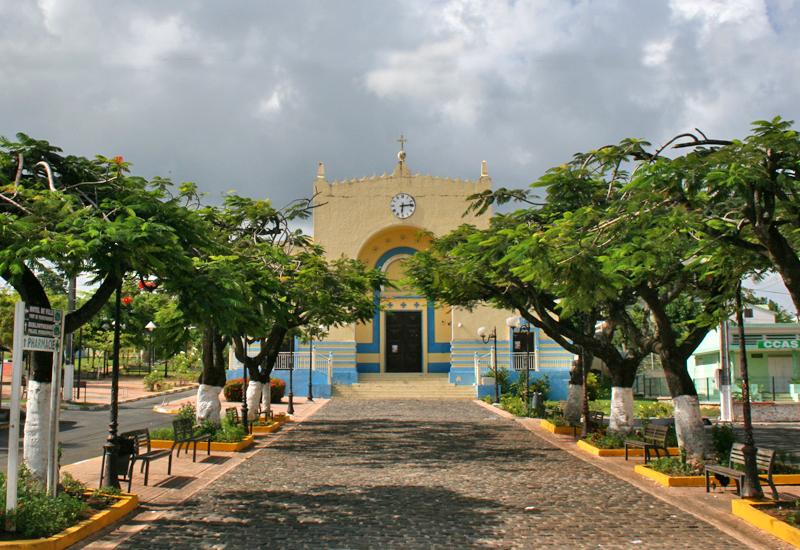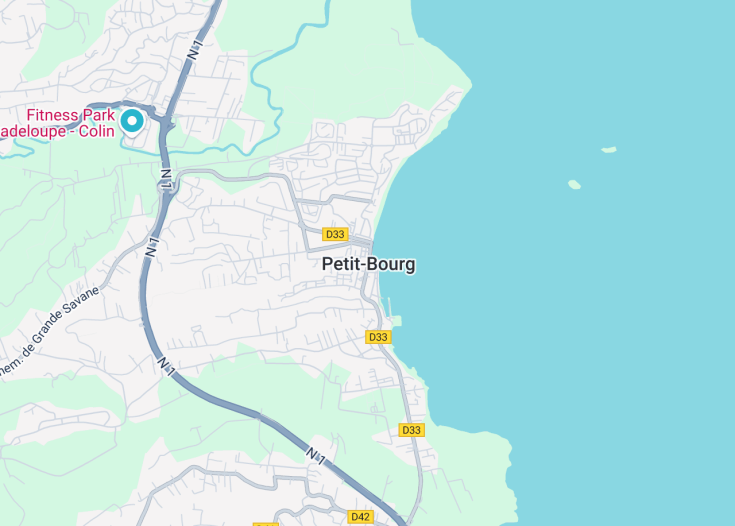Nestled on the eastern coast of Basse-Terre in Guadeloupe, Petit-Bourg stands as a lush, verdant sanctuary, often revered as “the green city” of the French West Indies. This destination offers an enthralling blend of natural scenery and unique cultural experiences, from the sprawling National Park of Guadeloupe to the serene waters of the Lézarde River. Petit-Bourg is not merely breathtaking, but it also serves as a gateway to the island’s rich biodiversity and vibrant local traditions, making it ideal for eco-tourists and cultural enthusiasts alike.
Be sure to visit during the mild winter months, from December to May, to enjoy Petit-Bourg’s natural beauty under sunny skies with fewer rainfall interruptions.
For an unforgettable adventure in Petit-Bourg, embark on a guided hike in the National Park of Guadeloupe—perfect for witnessing the island’s exotic wildlife and flora up close.
Top things to do & see in Petit-Bourg
Select the following sights and activities to discover best tickets and tours available in Petit-Bourg.
Petit-Bourg: A Lush Gateway in the Heart of Guadeloupe
| Country | Guadeloupe (France) |
| Time in Petit-Bourg | GMT-4 |
| Language spoken | French |
| Population | 24,518 (INSEE 2021) |
| Currency | Euro (€, EUR) |
| Airports |
|
Petit-Bourg, situated in Guadeloupe, a French overseas region, embraces lush biodiversity and is notable for its rich landscapes and treks. Founded in the 17th century during French colonial expansion, Petit-Bourg’s early economy was heavily influenced by sugarcane cultivation but has since diversified. Today, it plays a critical role in Guadeloupe’s ecological tourism scene, with numerous hiking paths, spectacular waterfalls such as Cascade aux Ecrevisses, and national parks like Guadeloupe National Park, which boasts some of the richest fauna and flora in the Caribbean.
Despitenits small size, Petit-Bourgstands amidthe larger context of Caribbean culture and heritage, blending French influence with local traditions. The town’s vibrant community participates in Guadeloupe’s lively cultural festivals, such as Carnival, featuring music, dance, and colorful costumes, deeply ingrained in the cultural fabric of the community.
Economically, Petit-Bourg benefits from its position as a gateway between the urban areas of Basse-Terre and Pointe-à-Pitre, facilitating a dynamic environment for businesses and tourism activities. Its economy also leverages agricultural produce and local craftsmanship, promoting a sustainable lifestyle that attracts environmentally conscious tourists and residents alike.
Education is valued here, with several educational institutions catering to a growing younger population, ensuring the cultural and intellectual development of its residents. Petit-Bourg is not only a gateway to exploring Guadeloupe’s diverse ecological systems but also a testament to sustainable community living within the Caribbean’s vibrant atmosphere and scenic beauty.
Where is Petit-Bourg?
Petit-Bourg lies on the eastern coastline of Basse-Terre Island, part of Guadeloupe in the Lesser Antilles, bordered by lush rainforests and the Atlantic Ocean.
Distances:
| Route | Distance by car | Time by car |
|---|---|---|
| Petit-Bourg to Pointe-à-Pitre | 15 miles (24 km) | 25 minutes |
| Petit-Bourg to Basse-Terre | 20 miles (32 km) | 35 minutes |
What is Petit-Bourg famous for?
Petit-Bourg is renowned for its stunning natural landscapes, from lush rainforests and waterfalls to the protected areas within Guadeloupe National Park, making it an ideal spot for eco-tourism and nature enthusiasts.
History
Pre-Colonial Times – Before 1493
Before the arrival of Europeans, the area now known as Petit-Bourg in Guadeloupe was inhabited by indigenous peoples, primarily the Arawak and later the Carib tribes. These communities were primarily engaged in agriculture, fishing, and trading with other Caribbean islands. The lush rainforest and fertile soil made the region an ideal place for settlement and cultivation.
Colonial Era – 1493 to 1848
The recorded history of Petit-Bourg begins with the arrival of Christopher Columbus during his second voyage to the Americas in 1493. The French officially colonized Guadeloupe in 1635. Petit-Bourg, due to its strategic location and fertile land, quickly became a site for the establishment of sugarcane plantations, driven by slave labor imported from Africa. This period was marked by brutal exploitation of slaves, economic growth through sugar trade, and intermittent conflicts with the British forces. The town was often caught in the crossfire of Anglo-French wars for control over the Caribbean.
Post-Emancipation Era – 1848 to 20th Century
Slavery was abolished in Guadeloupe in 1848, leading to major social and economic changes in Petit-Bourg. Former slaves became wage laborers or small landholders, and the economy gradually diversified beyond sugar into banana and pineapple cultivation. The town was also modernized with the introduction of roads, schools, and other public infrastructure, shaping much of its contemporary character through the 20th century.
Contemporary Period – 20th Century to Present
In recent decades, Petit-Bourg has transformed from a primarily agricultural town to a more service-oriented community. It has preserved much of its natural landscape and historical sites, leveraging them for growing tourism. Efforts have also been made to protect its rich biodiversity through conservation initiatives, turning it into an ecotourism destination. Today, Petit-Bourg is celebrated not only for its historical heritage but also for its commitment to preserving its natural beauty while fostering sustainable development.
Visit Petit-Bourg
What to see and do in Petit-Bourg, Guadeloupe (France)
Visitors to Petit-Bourg can immerse themselves in both natural and cultural experiences. Key highlights include:
- The National Park of Guadeloupe, offering extensive hiking trails and stunning views of Carbet Falls.
- Les Mamelles Zoological Park, where families can enjoy observing local wildlife in a protected setting.
- The coastlines and rivers that provide opportunities for water sports and relaxation.
- Exploring the historic ruins of colonial plantations to understand the area’s complex past.
- Local markets where artisans sell traditional crafts, spices, and tropical fruits.
Petit-Bourg is a treasure trove of activities that cater to both adventure seekers and those looking to relax amidst nature.
Cultural Celebrations in Petit-Bourg
Petit-Bourg hosts several cultural events and festivals throughout the year that reflect its rich heritage and vibrant community life. Notable events include the Carnival, celebrated with parades and music in the early part of the year, and the Crab Festival in April, which features culinary competitions, music, and dance, centered around traditional crab dishes. These events provide a deep insight into the local culture and are perfect times for visitors to experience the unique traditions of Petit-Bourg.
Best time to visit Petit-Bourg
The optimal time to visit Petit-Bourg is between December and May. During these months, the weather is drier, and the temperatures are comfortable, making it ideal for outdoor activities and exploring the lush landscapes. Tourists can avoid the hurricane season, which typically runs from June to November, and enjoy the town’s many festivals and events that take place early in the year.
Is Petit-Bourg worth visiting?
Petit-Bourg offers a unique blend of natural beauty, historical depth, and cultural vibrancy, making it a worthwhile destination for many travelers. Its appeal lies in its unspoiled rainforests, waterfalls, and rich biodiversity. However, those seeking urban entertainment or luxurious beach resorts might find it less appealing. The town’s infrastructure, while adequate, may not meet the expectations of those accustomed to more tourist-heavy destinations. Nevertheless, for those interested in ecotourism, cultural events, and historical exploration, Petit-Bourg offers a rich and engaging experience.










